The Jeep Cherokee has one of the best reputations for off-road capability in the compact SUV segment. To complement the compact Jeep's trail-ready specs, many Cherokee owners prefer to upsize from the stock tires. So what are the biggest tires that you can fit on a Jeep Cherokee with stock suspension height? Here's what our research has uncovered.
A completely unmodified, current-generation Jeep Cherokee Trailhawk can accommodate tires up to 31.5 inches in overall diameter and 9.6 inches in tread width.
The other Cherokee trims of the same generation, however, can only fit tires up to 29.2 inches in overall diameter and 9.3 inches in tread width.
The previous-generation Jeep Cherokee can accommodate tires with a maximum overall diameter of 28.9 inches and a maximum tread width of 9.3 inches.
Upsizing tires is both a practical and aesthetic decision you have to make for your vehicle. Read on, because we'll provide you with the best upsizing options as well as some helpful points to consider before going for bigger tires.
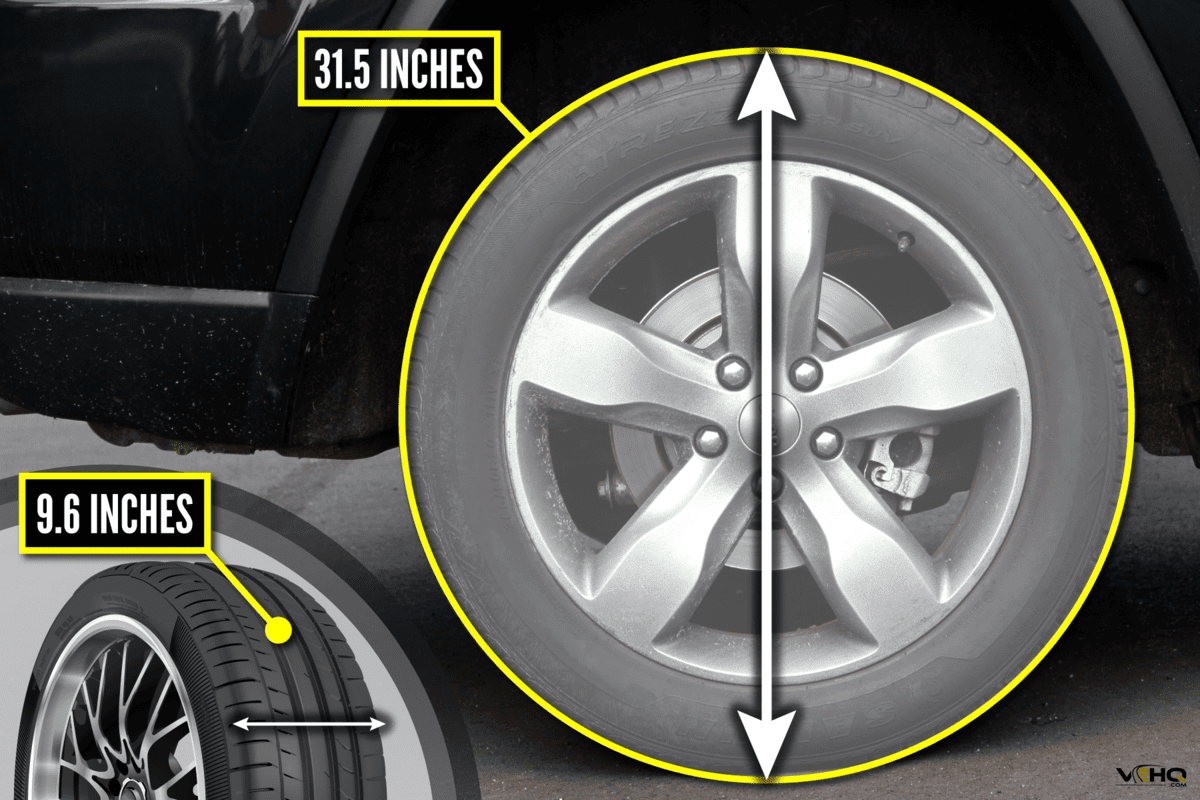
Can You Put Bigger Tires On A Jeep Cherokee?
Although the current-generation Jeep Cherokee has been around since 2014, it still has a significant customer base. Until 2020, this luxury compact SUV model was always in the top 10 bestsellers of the segment.
After eight years, the fifth-generation Jeep Cherokee "KL" model may not be leading the pack in terms of interior design and quality. However, the Cherokee still holds its own as one of the most off-road capable models among dozens of competitors.
To highlight the compact SUV's rugged pedigree, many Jeep Cherokee owners opt to upgrade from the stock wheel-and-tire setup.
If you're planning to follow this trend, then you might be wondering what the biggest tires are that you can use without giving the Cherokee any suspension lift.
For the current Cherokee KL models with stock rims and suspension, the largest tire size you can fit varies depending on the trim level.
Jeep Cherokee Max Tire Size
As of 2022, three of the four available Jeep Cherokee trims sit on normal-duty suspension systems that give the vehicles a modest ground clearance of six inches. With a limited wheel well clearance, these trims can only accommodate 29-inch tires.
For example, the Limited trim comes with stock 235/50/R19 tires which are 28.3 inches in diameter and 9.3 inches wide. Without doing any modification, you can still fit slightly larger tires, like 235/55/R19 (29.2 inches diameter, 9.3 inches width).
Older Jeep Cherokee generations have almost the same maximum tire size on stock rims and suspensions.
For example, the Jeep Cherokee XJ model (1984-2001) can accommodate 235/75/R15 tires (28.9 inches diameter, 9.3 inches width) with no issues.
Here's a video showing how 30-inch tires will look on a stock Jeep Cherokee XJ.
Although the tires will fit even with stock suspension, you will need to do some fender trimming. Furthermore, large bumps may make the tires hit or rub against the body or fender lining.
Jeep Cherokee Trailhawk Max Tire Size
The trail-rated Jeep Cherokee Trailhawk is the most off-road-capable trim in the Cherokee lineup. With a one-inch factory lift and bigger tires, the 2022 Trailhawk boasts an eight-inch ground clearance.
Due to its off-road suspension, the Trailhawk comes with 245/65/R17 tires, which are larger than those of the other trims. Stock Cherokee Trailhawk tires have an overall diameter of 29.5 inches and a tread width of 9.6 inches.
According to several Cherokee Trailhawk forums, you can still fit slightly bigger tires on a completely stock 2022 Trailhawk. The maximum possible tire size that won't cause any rubbing is 245 70 r17. This tire is 30.5 inches in diameter and 9.6 inches wide.
How Do You Read The Numbers On A Tire?
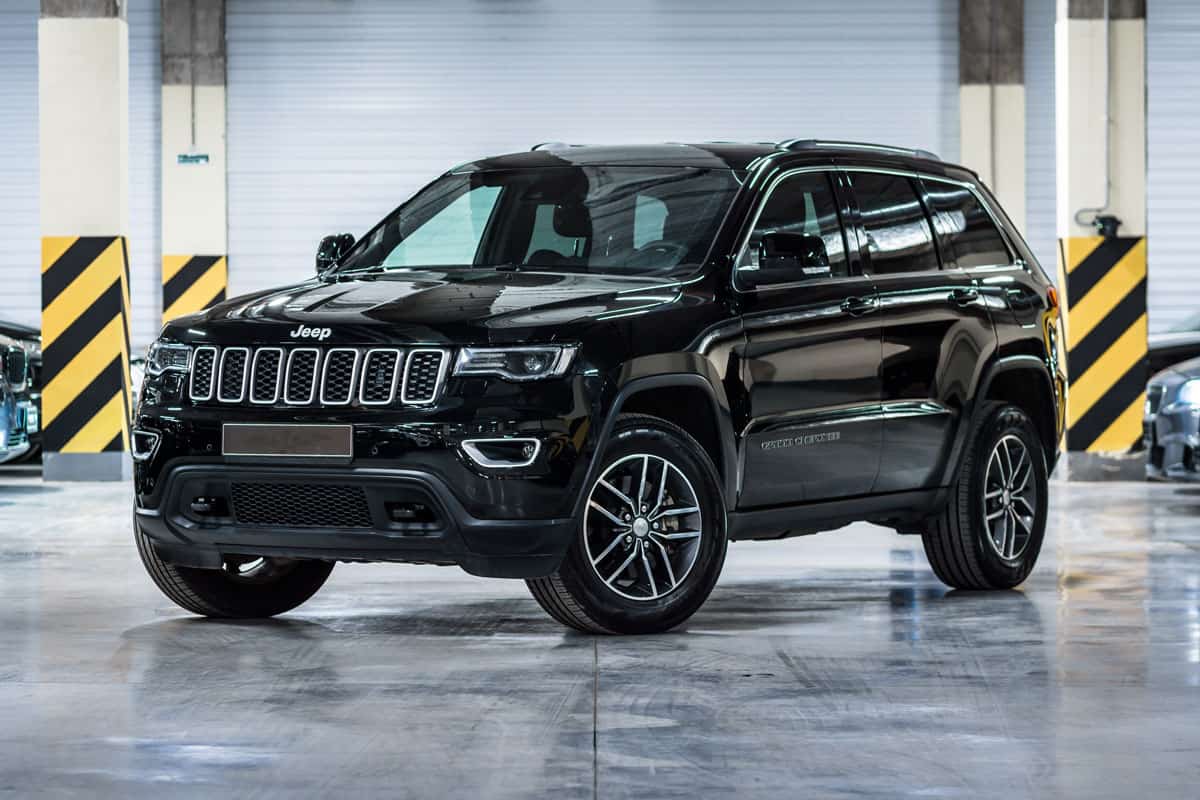
Most production tires show their size specifications on the tire's sidewall. However, not all people may be readily familiar with the exact meaning of these numbers. For example, let's use the stock 2022 Jeep Cherokee Trailhawk tire size: 245/65/R17.
- 245 refers to the tire's width, stated in millimeters
- 65 describes the tire's aspect ratio, expressed in a percentage format
- R17 pertains to the tire's specific rim size (17 inches) and construction (radial "R")
How Do You Figure Out The Overall Diameter Of A Tire?
A tire's overall diameter is the distance between two opposite points on its outermost circumference. To measure a tire's diameter, follow these steps.
- Mount the tire on its appropriate rim size.
- Inflate the tire to its manufacturer-specified air pressure.
- The tire should not bear any load, including the weight of the vehicle.
- During measurement, the wheel-and-tire assembly should rest on flat, level ground.
What Is The Tread Width?
Using the same specific conditions for measuring the tire's overall diameter, you can also get the tire's width, or tread width.
Tire width refers to the distance between one sidewall to the other, with the measuring line set perpendicularly to both walls' general orientation.
What Is Aspect Ratio In Tires?
A tire's aspect ratio refers to the "height" of the tire's sidewall in relation to the tire's width. To get a tire's aspect ratio, you must first get the tire's sidewall height.
The tire's sidewall height, by definition, starts from the rim's outermost point to a corresponding outermost point on the tire's circumference. If you extend the line between these two points, the line should cross the rim's center.
After you get the tire's sidewall height, you will need to divide it by the tire's tread width. The quotient, expressed in percentage format, becomes the tire's aspect ratio.
For example, a 65 aspect ratio tells you that the tire's sidewall height is equal to 65% of the tire's width.
Do Bigger Tires Affect Performance?
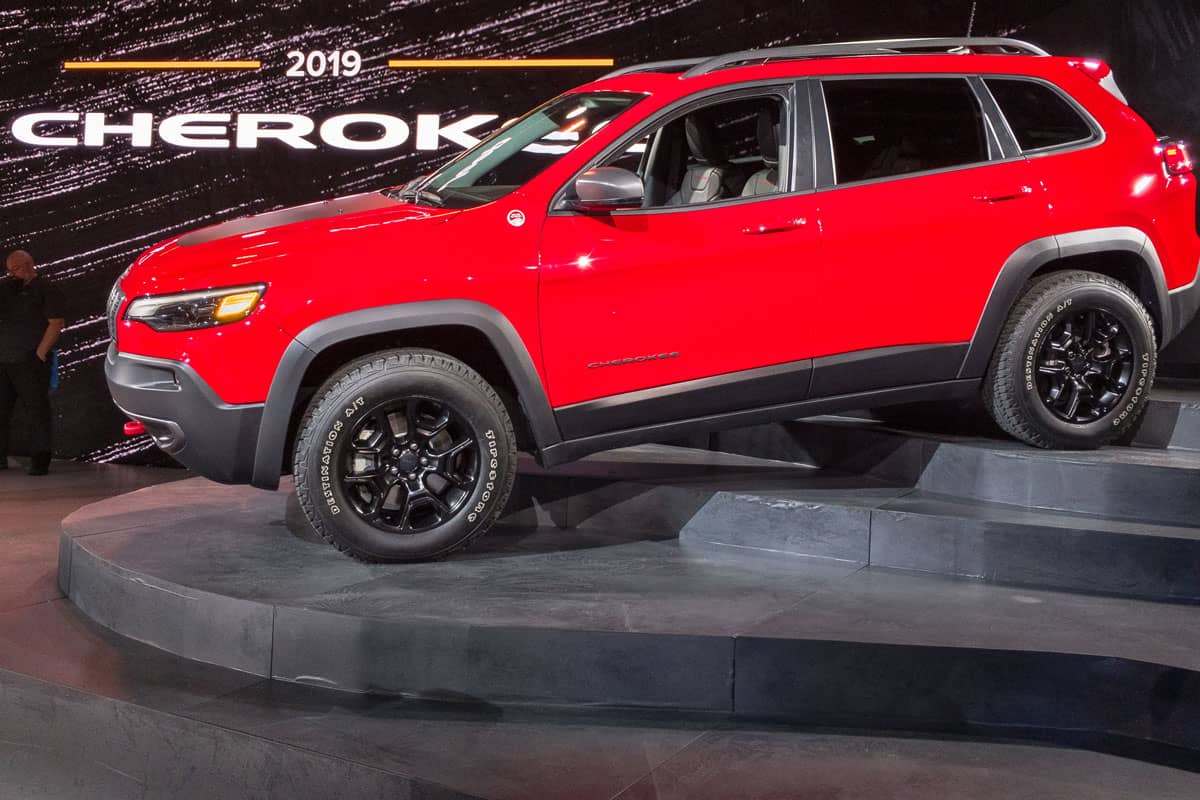
Many SUV and truck aficionados upgrade from stock tires to bigger, aftermarket ones to boost their vehicles' overall appeal. However, tire upsizing benefits do not stop at aesthetic improvements.
In the following sections, we will touch on the performance benefits of shifting to bigger tires.
Higher Ground Clearance
Even if you leave the rims and suspension system in stock or factory configuration, a set of taller tires automatically increases a car's ground clearance. Consequently, the vehicle will also get an increase in its break-over, approach, and departure angles.
Moreover, higher ground clearance also increases a vehicle's water wading or fording depth. To summarize, a higher ground clearance helps improve a vehicle's capability in tackling off-road trails or even braving flooded city streets.
Better Traction
Physics tells us that wider tires create larger contact patches on the road surface than narrower tires. Because of these larger contact patches, the tires achieve better road traction.
To illustrate, wider tires can get a vehicle across snowy, icy, muddy, or sandy terrains that would otherwise get narrower tires stuck or unusable.
Moreover, during highway cruising or even during emergency cornering maneuvers, wider tires help the driver keep the vehicle in control.
Better Ride Comfort
Using the same rim size, taller tires will generally give passengers a more comfortable ride than shorter ones will.
Because taller tires have broader sidewalls that have more flexing range, they can absorb more impact and vibrations than shorter, low-profile tires can.
Is It Bad To Have Bigger Tires?
Now that we've enumerated some advantages of upsizing tires, let's discuss the trade-offs.
- Heavier steering: Larger tires with bigger contact patches generate more friction, especially when you're dry steering your vehicle in cramped parking spaces.
- Decreased acceleration: Bigger tires are heavier and create more rolling resistance against the engine and transmission.
- Decreased fuel efficiency: Because the engine has to work harder to overcome a higher rolling resistance, the vehicle will consume more fuel than it did before.
- Inaccurate speed and distance reading: Car manufacturers calibrate a vehicle's speedometer and odometer based on the stock tire diameter. Because bigger-diameter tires will move farther with every rotation vis-a-vis smaller-diameter tires, the speedometer and odometer will register inaccurate readings.
- More expensive maintenance: In general, bigger tires are more expensive than smaller ones.
What Engine Does A Jeep Cherokee Have?
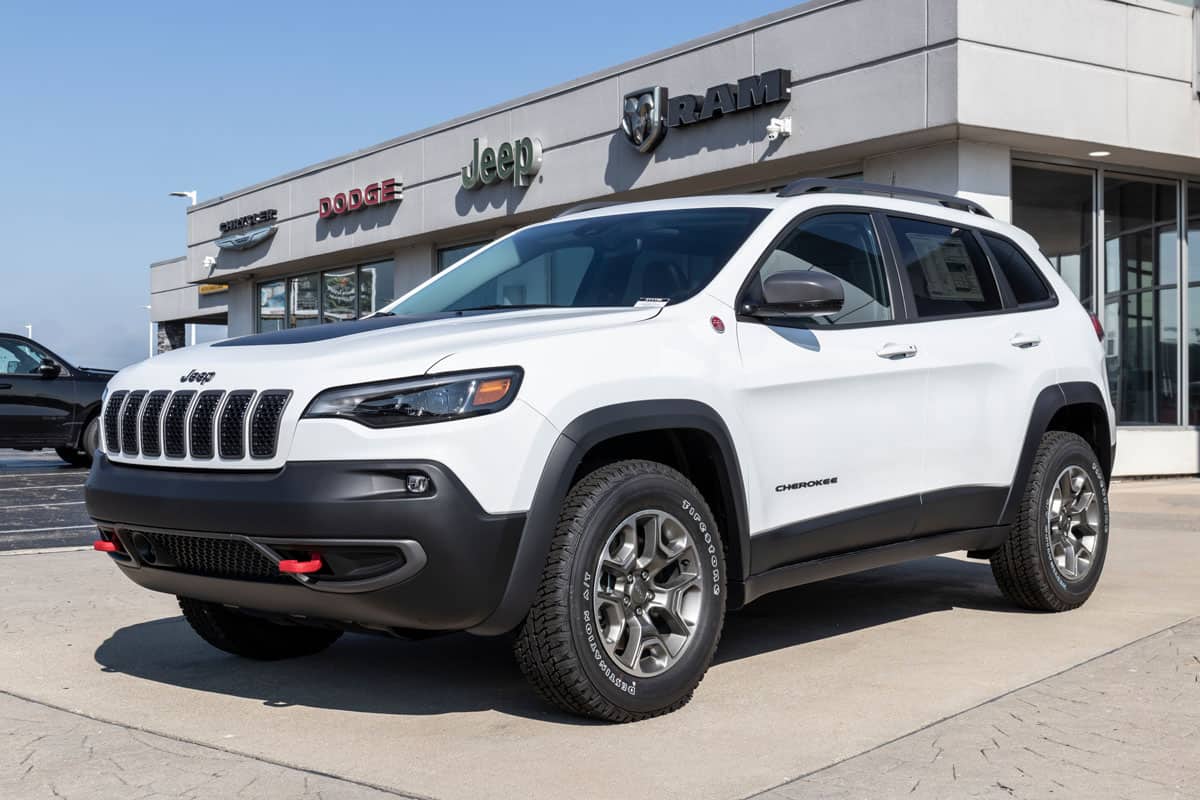
To cater to different customer preferences, the 2022 Jeep Cherokee offers two different engine choices.
The 3.2-liter Pentastar V6 is a smooth, naturally aspirated engine that comes as the standard mill for all four available trims.
This engine delivers 271 horsepower and 239 lb.-ft. of torque and can also achieve a combined fuel economy rating of 23 miles per gallon.
On the other hand, the 2.0-liter turbocharged GME Hurricane engine comes as an option for the Latitude Lux and the Limited 4x4 trims.
This inline-4, direct-injection gasoline engine can produce almost the same horsepower rating (270 h.p.) but a significantly higher torque output (295 lb.-ft.).
Furthermore, the 2.0-liter turbocharged mill gets a better fuel efficiency, achieving 26 miles per gallon in a combined city and highway setting.
Check out the video below for a real-world comparison between the two engines of the Jeep Cherokee.
How Much Does A Jeep Cherokee Cost?
If you want to prioritize off-road capability for your next compact SUV, then you might want to consider the current-generation Jeep Cherokee.
To help you get started on your online window shopping, here's a list of the starting prices of the 2022 Jeep Cherokee trims.
- Latitude Lux FWD - $ 34,895
- Cherokee X 4x4 - $ 35,245
- Trailhawk 4x4 - $ 37,545
- Limited 4x4 - $ 39,345
These prices are accurate as of December 2022.
Wrapping Up
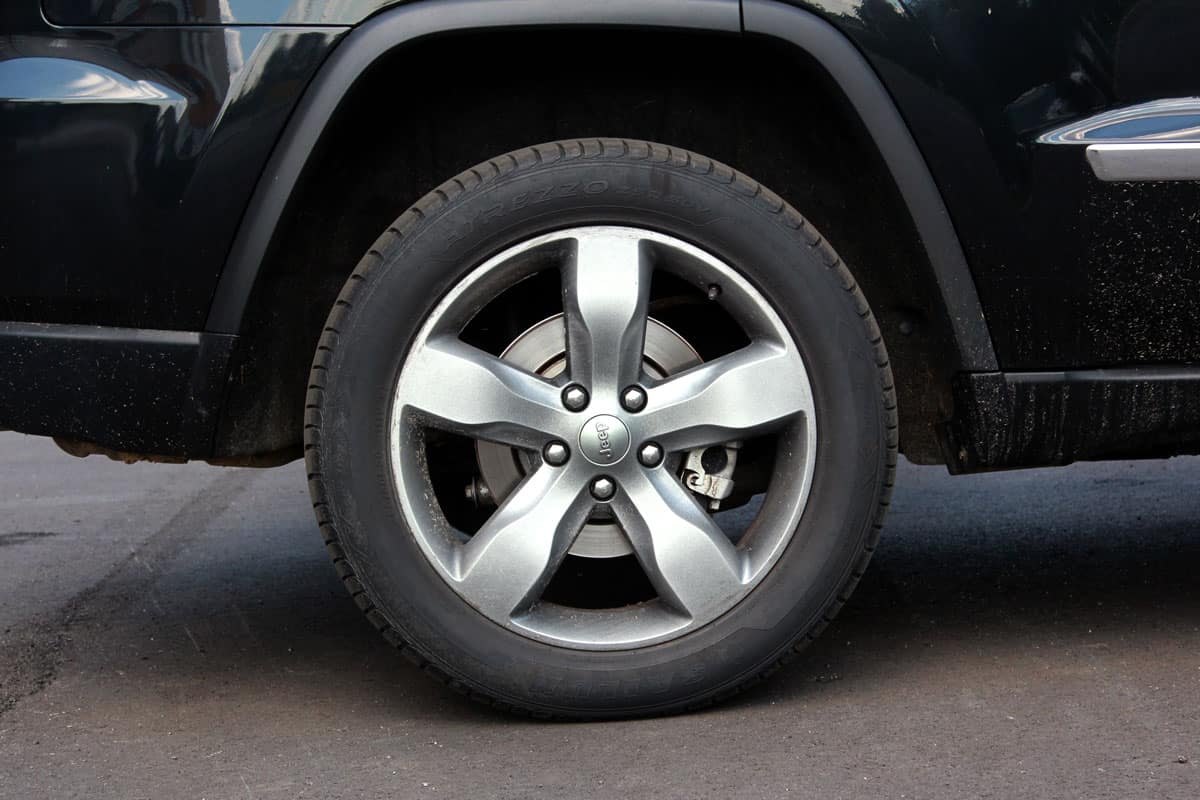
Depending on the trim, a stock Jeep Cherokee KL model can accommodate tires ranging from 29 inches to 30.5 inches in overall diameter and 9.3 inches to 9.6 inches in diameter.
Older Jeep Cherokee generations like the XJ model can also fit certain 29-inch tires without any modifications.
Thank you very much for reading. For more interesting reads about tires, check out the articles below.
What Are The Biggest Tires That Fit A Stock Trail Boss?
What Are The Biggest Tires That Fit On A Stock Chevy 3500 Dually?
